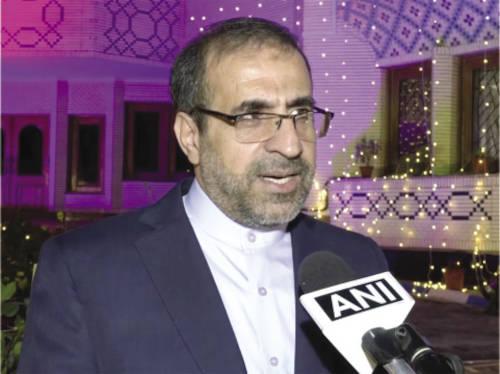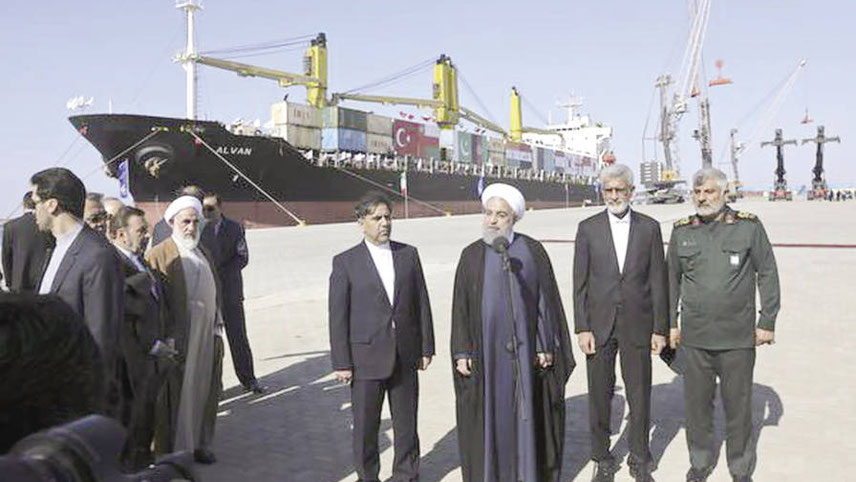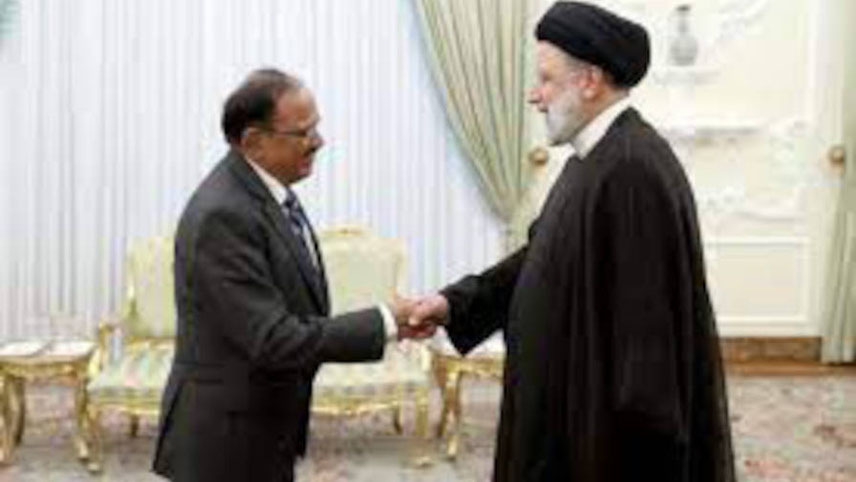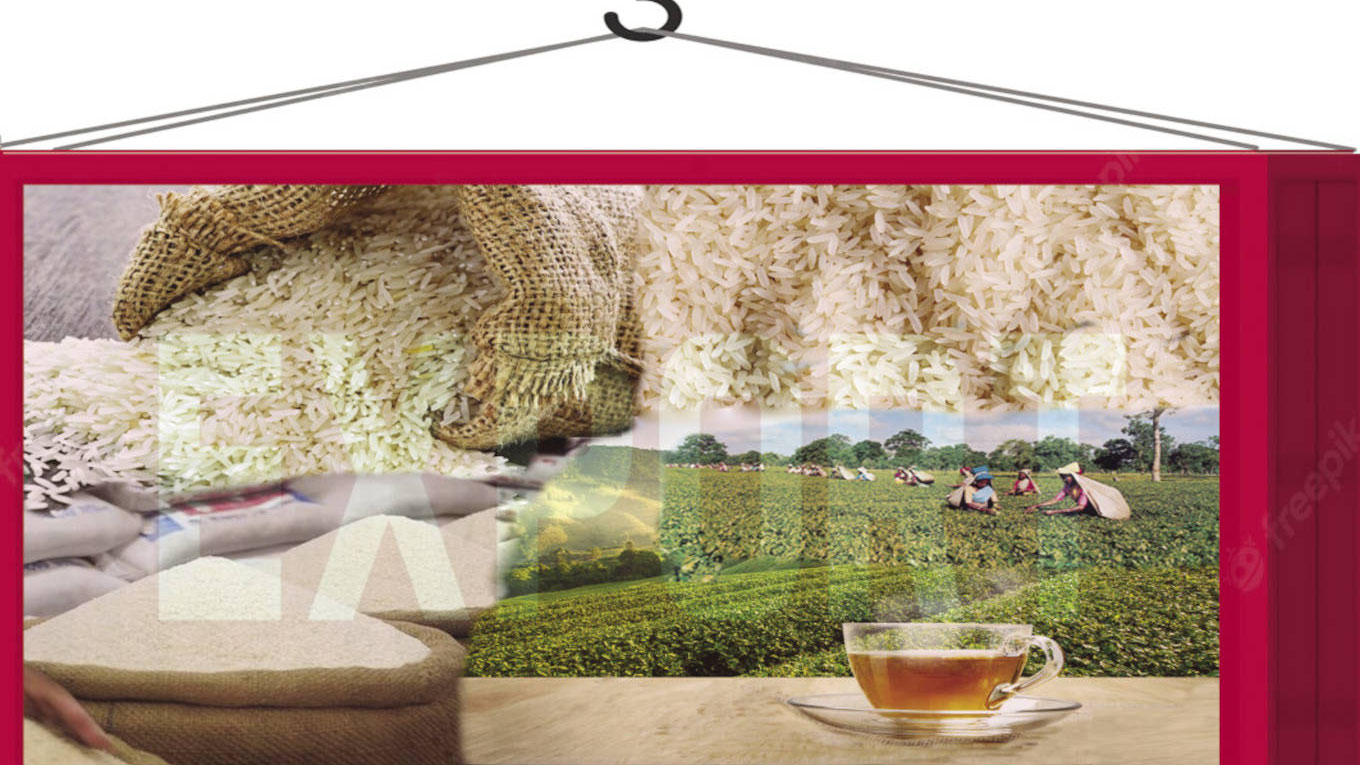-

We believe that India is and was strong and powerful to stand against the pressure of the West... India is a rising power. India has a powerful economy. So, India could easily resist pressure from the US and the West
Iraj Elahi, Iran’s ambassador to India
Continuous fall
New Delhi should have been more alert to the developments in the region on other fronts as well. In 2018-19, bilateral trade between New Delhi and Tehran stood at $17.03 billion. However, after a continuous fall – in 2021-22, it dropped to $1.9 billion. While India’s main exports comprised rice and tea, Iran shipped goods such as nuts, ammonia, apples, pears, pistachios, dates and almonds, among other items. Products including methanol, toluene, crude oil, liquified butane and propane, mineral base oil have also been coming into India from Iran.
Iran has been either the largest or second-largest importer of Indian basmati since 2014-15, according to government data. It was the largest importer of the commodity in 2017-18, 2018-19, 2019-20 and 2021-22. Iran imported 935,567 tonnes of basmati in 2014-15, and the amount peaked in 2018-19 at 1.4 million tonnes. The figure for 2022-23 was 998,879 tonnes. Iran was also the fourth largest buyer of Indian tea during 2022-23, with imports worth $68 million. But that may now change.
While the Iranian side has been working on ways to resume basmati rice imports from India, importers in that country have begun exploring the option of increasing rice procurements from other producers such as Pakistan, Turkey and Thailand.
Indian rice exporters, on the other hand, are at their wit’s end, as Iran has been a stable source of earning for them in the past. But due to non-payment of dues amounting to Rs700 crore amid a currency crisis in the Gulf nation, they have threatened to ship basmati rice to Iran only against letter of credit (LC) or cash. All India Rice Exporters Association (AIREA) recently wrote to the Government Trading Corporation (GTC) of Iran about this decision, but the latter failed to pay for the new season crop that arrived in the market in November-December last year and was shipped during January-March.
Implications for basmati farmers
This may have serious implications for our basmati rice farmers who had gone by the trend of the last three years and ramped up production. “The slump in exports may bring down prices in the domestic market. This does not spell good for basmati rice producers,” says Bal Krishan Mittal, MD, Gurdaspur Overseas Ltd, which deals in basmati rice.
Over the last one year, the Iranian rial tumbled significantly against the dollar, making imports far more expensive and sapping the purchasing power of ordinary Iranians. It has made some recovery of late, but the country continues to reel under high inflation. This has coincided with the depletion of its rupee reserves.
In 2022-23, Iran imported almost a million tonnes of the aromatic rice from India, which is 20.35 per cent of the total basmati exports of 4.5 million tonnes from the country. However, India-Iran trade has fallen sharply since 2019-20 after New Delhi stopped buying Iranian crude in May 2019. Till then, Iran was among the top three suppliers of energy to the country, along with Saudi Arabia and Iraq.
According to official data, India’s trade with Iran fell sharply in 2019-20, compared to the previous fiscal. Imports, mainly Iranian crude, fell about 90 per cent to $1.4 billion, as compared to $13.53 billion in 2018-19. The year-on-year fall was not that sharp (less than 5 per cent) for India’s exports to Iran, which were worth $3.37 billion in 2019-20, compared to $3.51 billion in 2018-19.
-
The slump in exports may bring down prices in the domestic market. This does not spell good for basmati rice producers
Bal Krishan Mittal, MD, Gurdaspur Overseas Ltd
“It seems Iran has exhausted all its rupee reserves, and thereby trade in local currencies of the respective countries is not possible,” a diplomatic source said. “As far as I know, there may not be any trade in local currencies (rupee-rial trade),” he added.
The Iranian side flagged the issue to the Indian side in several recent meetings and offered to resume oil exports as a way to build up rupee reserves held in India. Iran also pointed to India’s purchase of Russian crude in the face of Western sanctions and contended New Delhi should adopt a similar approach to resuming procurement of Iranian fossil fuels.
“We believe that India is and was strong and powerful to stand against the pressure of the West... India is a rising power. India has a powerful economy. So, India could easily resist pressure from the US and the West,” Iran’s ambassador to India Iraj Elahi recently said at a media briefing.
Iran, Russia similarity
That apart, our past dealings with Iran have been significant. Trade experts feel India could draw lessons from its past dealings with Iran in shaping the course of its burgeoning but lopsided trade with Russia. Russia’s energy exports to India have been growing since 2022. Facing western sanctions on account of its invasion of Ukraine, Russia found India to be a large and credible market alternative for its crude oil and offered to sell them at discounted prices. New Delhi seized the opportunity and within a year, it gradually became one of the largest buyers of Russian oil. This resulted in Russia being saddled with rupees for which it now finds little use.
While India remains optimistic about its energy imports from Russia, its continued patronage in the near future remains uncertain due to sanctions and prevailing fluctuations in the energy market. At this juncture, India’s experience trading with Iran can come as a learning curve.
Like Russia, Iran too was once a large oil supplier for India. Against the backdrop of western sanctions imposed since the 1979 Iranian revolution, Iran used to export over $10 billion of oil annually to India and was one of India’s largest oil suppliers up until 2019, when India pulled the plug and stopped buying oil from Iran after a US sanctions waiver expired. India is known for strictly maintaining its strategic autonomy against strong western persuasion. But, New Delhi was forced to compromise its interests, eventually leading to Iran’s disappearance from India’s energy basket.
The worry now is whether Russia will go down Iran’s path, while trading with India. The answer lies in the comparative trends observed in India’s bilateral oil trade with Iran and Russia trade.
First, discounts feature as the main force in shaping India’s oil trade with Iran and Russia. Earlier, Iran too had offered to sell crude oil to India at discounted prices, which gradually provided an impetus for the country to increase Iranian oil imports. India’s consumption of Russian oil was also maximised only after Moscow extended discounts.
Russia’s fossil fuel imports to India in 2021 were barely worth $5 billion but, in 2022, after providing price discounts of $30-35 per barrel, it was selling crude oil worth $34.6 billion – almost seven times what it sold the previous year. The conversion rate is staggering and highlights the impact fuel price discounts have on India’s growing energy needs.
-

New Delhi and Tehran, which are developing the Chabahar Port in southern Iran, have not been considered geopolitical rivals despite a rise in roadblocks
Sanctions common factor
Secondly, sanctions have been a common background feature noticed in India’s trade with Iran and Russia. Bilateral trade with a heavily sanctioned Iran was an uphill task for India even with a temporary relaxation on sanctions provided by the Iran nuclear deal in 2015, and encountered significant problems in the settlement of payments and shipping logistics – the same way as it faces with Russia today.
Though India tried its best to negotiate with Washington on extending the sanctions waiver for continuing to buy Iranian oil, the then Donald Trump administration was aggressive in its stance against Iran and was not open to providing further concessions to India any longer. The US even went to the extent of sanctioning an Indian petrochemical company for trading with Iran post the expiry of the sanctions’ waiver.
Third, the absence of a robust non-western financial system for settling payments is another common hurdle observed by India in Iran as well as Russia. In the backdrop of financial restrictions imposed on Iran and Russia on the usage of the dollar and suspension from the SWIFT international bank messaging network, payments to and from Russia became difficult and, hence, India decided to experiment with local currency payment settlement systems such as the rupee-rouble and rupee-rial exchange via special vostro accounts in corresponding banks.
However, operational banking issues, such as a lack of transparency regarding repatriation, insufficient currency reserves, additional handling expenses, and limited opportunities for surplus investment, resulted in the system’s collapse in Iran and hinder its successful implementation in Russia’s case as well.
Without a doubt, one can plausibly say that western actions against Russia are right from its playbook time-tested in Iran. India’s topsy-turvy experience trading with Iran is a reality check for Russia. Though India’s multidimensional strategic relationship with Russia is stronger and deeper than its relations with Iran, its actions are not entirely fool-proof against western overtures as noticed before.
India may be effective enough to strike a bargain with the Western world today and buy cheap Russian oil, but that does not guarantee the West against taking action in the future, especially in the era of punitive tools such as the Countering America’s Adversaries Through Sanctions Act (CAATSA).
Market choice
At the same time, India’s oil import from Russia cannot be overstated to be a longstanding one, instead can only be viewed as a price-sensitive market choice. Realistically, India’s decision to buy crude oil from Iran and Russia was not because of valuing its relationship to help a sanctions-hit country, but rather for the discounts they offered.
Price is key for India to continue buying Russian oil and will be influenced by a multitude of factors other than discounts such as the G7 price cap, rising Chinese demand for Russian oil, Russian crude oil production cuts, and pricing arrangements such as free-on-board basis – shipping and other costs such as insurance borne by the buyer from the origin, or delivered ex-ship basis – all costs till delivery at specified location borne by the seller.
That being said, if India wishes to capitalise and continue importing Russian oil, its first and foremost priority should be to insulate itself from sanction-induced risks. From Iran’s instance, India should understand that sanctions are not going to vanish anytime soon, and without an exhaustive payment system that bypasses West-controlled financial infrastructure, such as the SWIFT bank messaging network, Indian banks will always remain in the shadows of fear and uncertainty while transacting with Russia.
-

Doval with Iranian President Ebrahim Raisi: dispelling the chill
Thinking out of box
This is where India and Russia need to think out of the box and make the rupee-rouble system deliver. The resilience of such a payment system will determine the future of India-Russia trade. Similarly, India and Iran need to set up a robust rupee-rial payment mechanism to boost trade, particularly non-oil trade.
One way of doing this is to strengthen connectivity with the operationalisation of the International North South Transport Corridor (INSTC). The INSTC, envisaged to facilitate easier movement of freight between several countries including India, Russia, Iran, Afghanistan, Armenia, Belarus, Bulgaria, Kazakhstan, Kyrgyzstan and Tajikistan among others, is expected to give a further push to trade between New Delhi and Tehran.
Although a slow-starter, countries involved in the INSTC project are now reportedly working on fully operationalising it amid the geopolitical and geo-economic risks.
Non-oil trade optimism
There are also signs that non-oil trade between the two countries is again picking up. In April-May this year, Iran’s total non-oil exports stood at 21 million tonnes worth $7.5 billion and imports at 4.7 million tonnes worth $7.9 billion. In this, India has emerged as one of the top five export markets of Iran.
India is thus critical to Iran not only in terms of trade, investment, and security, but also in Tehran’s broader vision of advancing a multipolar world order with its pivot to the East. New Delhi and Tehran, which are developing the Chabahar Port in southern Iran, have not been considered geopolitical rivals despite a rise in roadblocks. Of late, India has used the Chabahar Port in Iran to send wheat to Afghanistan on humanitarian grounds.
Recently, National Security Advisor Ajit Doval visited Tehran and held a series of meetings with Iranian authorities. This dispelled some of the chill which has crept into bilateral ties when Iran’s Foreign Minister Hossein Amir-Abdollahian had skipped the Raisina Dialogue, an annual geopolitical conference hosted by the Observer Research Foundation (ORF) – a New Delhi-based think tank – and the Indian Ministry of External Affairs. His decision came after ORF posted a promotional video for the event, which included footage of Iranian women protesting against the compulsory hijab in demonstrations that erupted in September 2022.
The highlight of the Doval visit was Iranian President Ebrahim Raisi calling for taking India-Iran ties to a ‘new level’. In April, Iranian Defence Minister Mohammad Reza Gharaei Ashtiani too paid a visit to India to attend the SCO meeting. How these high-profile visits, according to diplomats, will pan out in the field of economy, particularly trade, and security remain to be seen now.





































